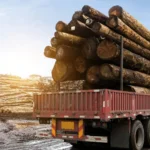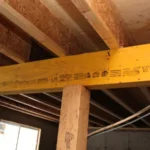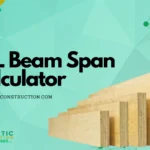When it comes to tackling a full-scale demolition project with precision, there’s one trusty machine that stands out – the excavator. The excavator reigns supreme in the realm of medium to large-scale demolitions.
Excavators are the go-to tool for taking down structures, clearing slabs, removing concrete footers, and managing debris. Amidst the plethora of excavator models available, what sets them apart are their weight, load capacity, maximum reach, and the attachments they can accommodate. Out of the myriad machines, three distinct classes take center stage in demolition projects.
These classes are the Mini-Excavators, the 200 Series, and the 300 Series. In this comprehensive guide, we will delve into the advantages and disadvantages of each, helping you make an informed choice for your project.
- Mini-Excavators
- 200-Series Excavator
- 300-Series Excavators
- Factors to Consider When Choosing an Excavator
- Frequently Asked Questions
- 1. What is the primary advantage of using a mini excavator?
- 2. When should I consider using a midi excavator instead of a mini excavator?
- 3. What are the primary advantages of standard excavators?
- 4. What types of projects are best suited for large excavators?
- 5. How do I determine the right excavator size for my project?
- 6. Is it more cost-effective to buy or rent an excavator?
- 7. Can excavators be used for tasks other than digging?
- 8. What safety precautions should I take when operating an excavator?
- 9. How do I transport an excavator to different job sites?
- 10. What maintenance tasks are required to keep an excavator in optimal condition?
- Conclusion

Mini-Excavators
These compact yet formidable machines are the ideal choice when you’re working within tight confines. When it comes to transportation, all they need is a standard or gooseneck trailer, making them incredibly versatile.
Pros:
- Their low profile is a blessing in warehouses and spaces with low roofs.
- Thanks to their lightweight and compact size, they excel in cramped quarters and on weight-restricted slabs.
- Mini-excavators can use the same attachments as their larger counterparts, including hammers, shears, and buckets, albeit in smaller versions.
Cons:
- They aren’t designed for heavy-duty tasks like structural demolition or handling substantial debris.
- To compensate, many projects have a skid-steer on-site for debris removal and material sorting.
200-Series Excavator
The 200-series stands as the workhorse of demolition projects. These machines, weighing 20+ tons, boast larger buckets, a wider stance, greater lifting capacity, and extended reach.
Pros:
- With a reach exceeding 30 feet, they are adept at demolishing structures of all sizes.
- These excavators can use larger attachments to expedite the entire demolition process, from bringing down buildings to sorting and loading debris for disposal.
- They are self-sufficient, often eliminating the need for additional machinery.
Cons:
- Transporting these larger machines is more complex, requiring a semi-truck with a lowboy trailer.
- Navigating through certain routes can be challenging due to the truck’s turning radius.
- They struggle with particularly demanding tasks like breaking large slabs or removing heavy building footers, which is where the 300-series comes in.
300-Series Excavators
The 300-series excavators are deployed when a project demands a comprehensive, turnkey approach.
Pros:
- These heavy-duty machines can tackle everything the 200 series can, and more.
- Ideal for excavating building footers, breaking stubborn concrete slabs, and processing materials.
- Their substantial lifting capacity, high horsepower, 54 cu yd bucket, and weight exceeding 60,000 lbs enable them to handle a wide range of tasks.
Cons:
- Their size, while an advantage for some projects, can be a drawback. They simply won’t fit on every job site.
- The cost of renting a 300-series excavator is notably higher than that of a 200-series machine.
Each of these excavator classes has its strengths and weaknesses. It’s crucial to choose the machine that best suits your specific project requirements, as bigger isn’t always better.
Factors to Consider When Choosing an Excavator
When selecting the right excavator size for your project, several factors come into play. Let’s break them down:
1. Digging Depth
Ensure the excavator’s reach matches your project’s depth requirements. Opt for a machine that meets your regular needs, considering renting larger equipment for occasional deep digs.
2. Lifting Capacity
Choose an excavator capable of lifting materials of the desired weight. Larger excavators, powered by hydraulics, excel in handling heavier loads.
3. Budget
Balance the upfront cost with the long-term benefits. While larger excavators may be pricier, inadequate equipment can lead to costly delays. Renting might be a viable option for sporadic use.
4. Worksite Conditions
Evaluate the space constraints and logistical challenges of your worksite. Consider the presence of obstacles and the need for mobility across multiple locations.
5. Counterweight Options
Ensure the excavator’s counterweight matches your lifting requirements to maintain stability during operations.
6. Bucket Capacity
Select an excavator with a bucket size suited to your lifting needs, ensuring compatibility with the objects you intend to lift.
7. Hydraulic Attachments
For versatility and efficiency, opt for an excavator equipped with a hydraulic system compatible with various tool attachments required for your projects.
Mini Excavator: <6 tons (13,227 lbs)
Compact Powerhouses for Versatile Projects
Mini excavators, the diminutive dynamos of construction, pack a punch despite their size. Perfect for squeezing into tight spaces, they’re a favorite among contractors working on indoor projects, sewer repairs, and water line installations. Their compact nature allows easy transport via Class 1 and 2 trucks, making them ideal for contractors on the move.
Midi Excavator: 6–10 tons
Balancing Power and Maneuverability
Midi excavators bridge the gap between mini and standard sizes, offering increased reach and power while maintaining maneuverability. Suited for small spaces yet capable of handling more standard construction tasks, they provide versatility for a range of projects, from landscaping to building construction.
Standard Excavator: 10–45 tons
The Workhorse of Construction Sites
Standard excavators, also known as crawler excavators, dominate commercial construction projects. With greater power and reach, they handle heavy-duty tasks effortlessly. Their hydraulic systems enable the use of multiple tool attachments, enhancing their utility across various applications.
Large Excavator: 45 tons
Unmatched Power for Major Projects
Large excavators reign supreme in the realm of construction giants. Designed for mammoth tasks like major construction and demolition projects, they offer unparalleled power and capacity. However, their colossal size demands oversized transport options and ample storage space.
Frequently Asked Questions
1. What is the primary advantage of using a mini excavator?
Mini excavators are incredibly versatile due to their compact size, allowing them to access tight spaces that larger machines cannot reach. They are also easily transportable, making them ideal for contractors who need to move between multiple job sites.
2. When should I consider using a midi excavator instead of a mini excavator?
You might opt for a midi excavator when you require more power and reach than what a mini excavator can provide. Midi excavators strike a balance between compactness and capability, making them suitable for a broader range of projects, including standard construction tasks.
3. What are the primary advantages of standard excavators?
Standard excavators, also known as crawler excavators, offer superior power, reach, and lifting capacity compared to smaller models. Their hydraulic systems enable the use of various attachments, enhancing their versatility and efficiency on construction sites.
4. What types of projects are best suited for large excavators?
Large excavators are ideal for major construction and demolition projects that demand significant power and capacity. These machines excel at tasks such as excavating large volumes of earth, breaking through hard surfaces, and lifting heavy materials.
5. How do I determine the right excavator size for my project?
Several factors influence the choice of excavator size, including digging depth, lifting capacity, budget, worksite conditions, counterweight options, bucket capacity, and hydraulic attachments. Assessing these factors in relation to your project’s requirements will help you select the most suitable excavator size.
6. Is it more cost-effective to buy or rent an excavator?
The decision to buy or rent an excavator depends on various factors, including the frequency of use, project duration, budget constraints, and storage availability. For sporadic use or short-term projects, renting may be more cost-effective, while purchasing may offer long-term benefits for frequent or ongoing construction work.
7. Can excavators be used for tasks other than digging?
Yes, excavators can perform a wide range of tasks beyond digging, thanks to their compatibility with various attachments. These attachments include but are not limited to buckets for excavation, hydraulic hammers for breaking concrete or rock, grapples for handling debris, and augers for drilling holes.
8. What safety precautions should I take when operating an excavator?
Operating an excavator safely requires proper training, adherence to manufacturer guidelines, and compliance with relevant safety regulations. Operators should wear appropriate personal protective equipment, conduct pre-operation inspections, and maintain a safe distance from bystanders and potential hazards.
9. How do I transport an excavator to different job sites?
Transporting an excavator involves loading it onto a suitable trailer or truck and securing it with chains or straps to prevent shifting during transit. Ensure that the transport vehicle is properly sized and equipped to handle the weight and dimensions of the excavator, and comply with local transportation regulations.
10. What maintenance tasks are required to keep an excavator in optimal condition?
Regular maintenance is essential to keep an excavator operating smoothly and prevent breakdowns. This includes checking fluid levels, inspecting hydraulic hoses and fittings, lubricating moving parts, inspecting tracks or tires, and addressing any signs of wear or damage promptly. It’s also important to follow the manufacturer’s recommended maintenance schedule and procedures.
Conclusion
In conclusion, excavators are indispensable tools in the world of demolition, and understanding their capabilities and limitations is crucial in making the right choice for your project. We hope this guide has shed light on the intricate world of excavators, helping you feel confident in selecting the perfect machine for your next demolition venture!



















